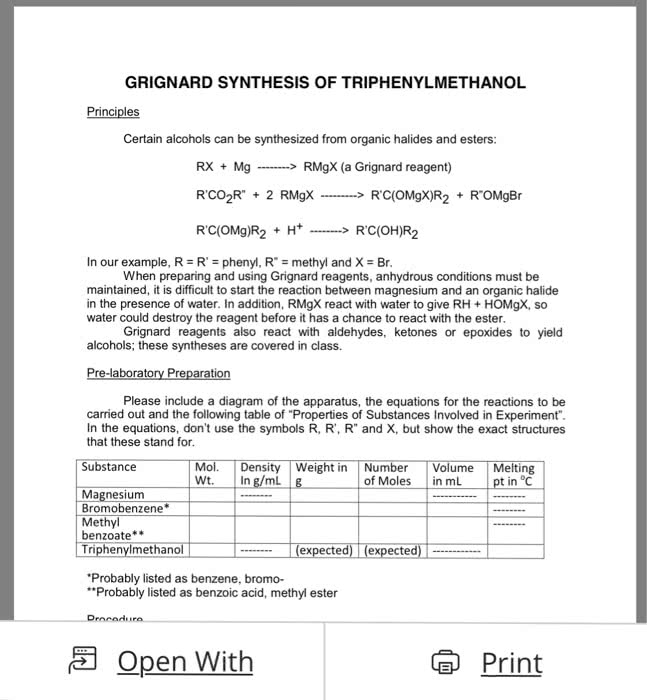CHM 1721 Study Guide - Final Guide: Reagent, Hydrochloric Acid, Hexane
Document Summary
Preparation of benzoic acid using a grignard reagent. To understand the prepartion and use of grignard reagents. To synthesize benzoic acid using a grignard reagent. A classical method for making new carbon-carbon bonds uses reactants containing magnesium carbon bonds, known as grignard reagents. Grignard regents react with a variety of classes of organic compounds such as aldehydes, epoxides, esters, acid halides, and nitriles. Victor grignard, a french chemist at the turn of the twentieth century discovered that organic halides (r-x, x=cl, br, or i) and magnesium react to form organomagnesium halides (r-mg-x, x=cl, In 1912 he was awarded the nobel prize for this discovery. Grignard reagents may be formed by reacting elemental magnesium with primary, secondary, and tertiary alkyl halides, or aryl and vinyl halides. Phenylmagnesium bromide will be used to produce benzoic acid via reaction with solid carbon dioxide (dry ice). The resulting salt will be quenched with hydrochloric acid to give the final organic carboxylic acid.




